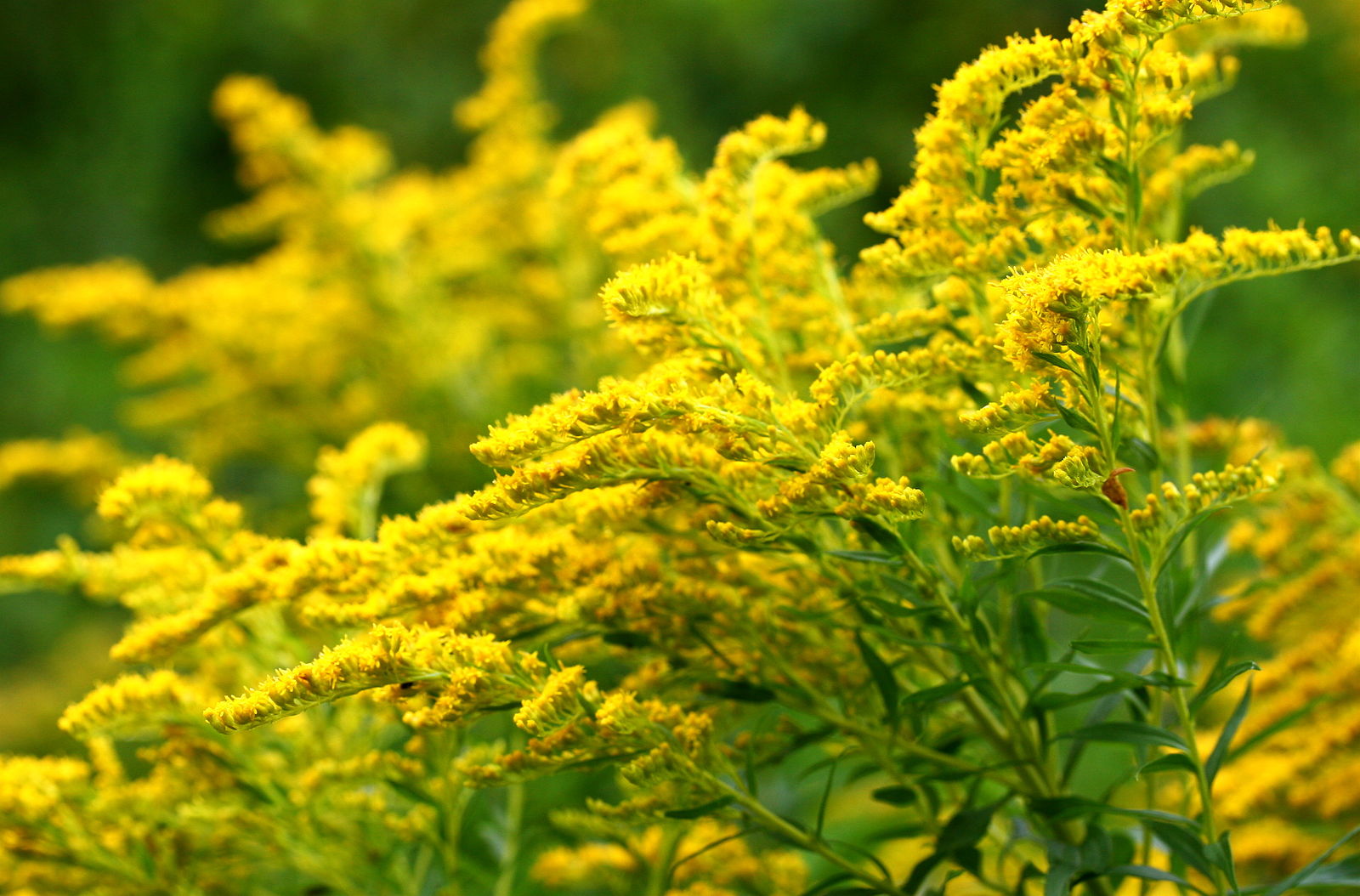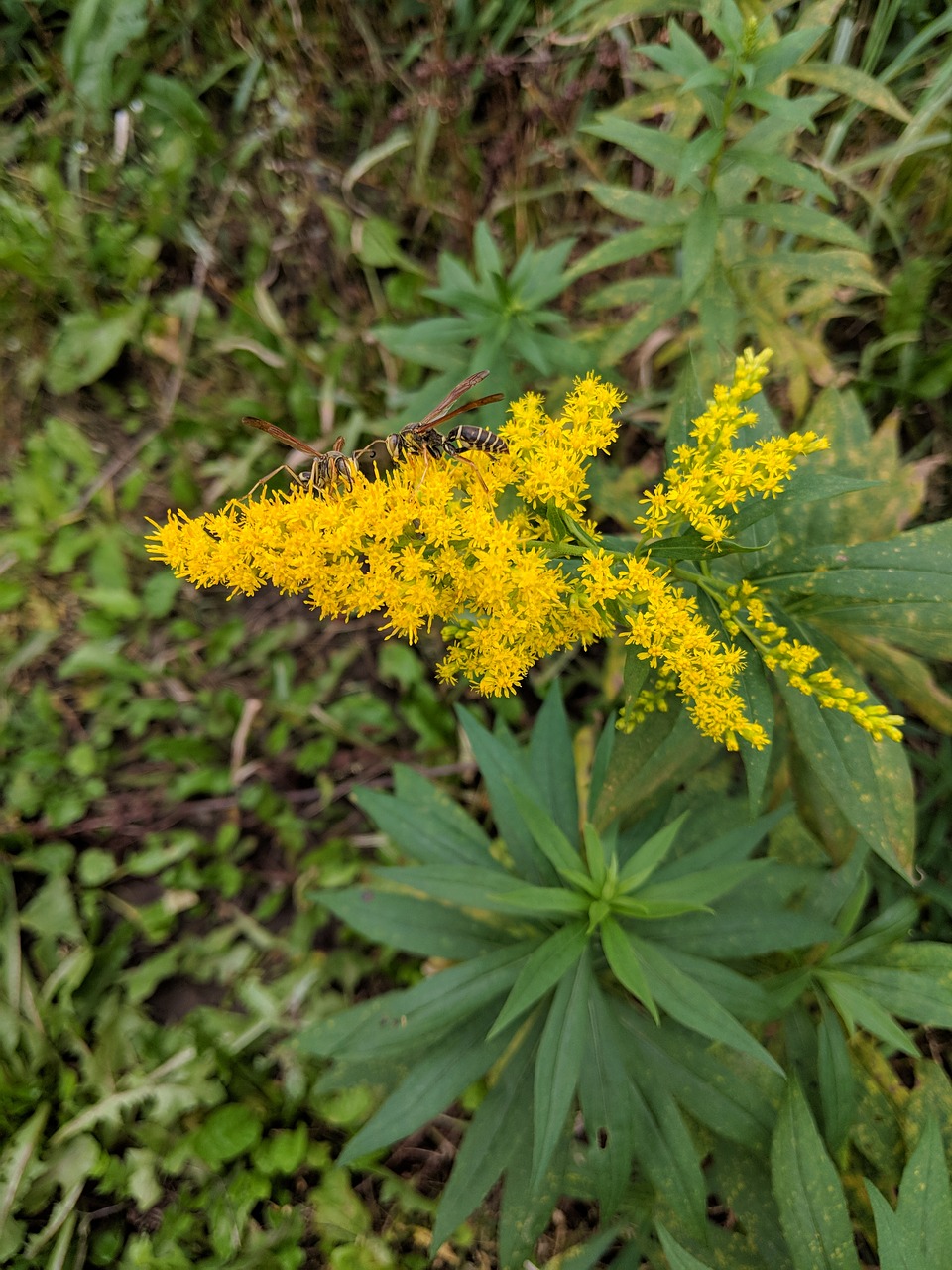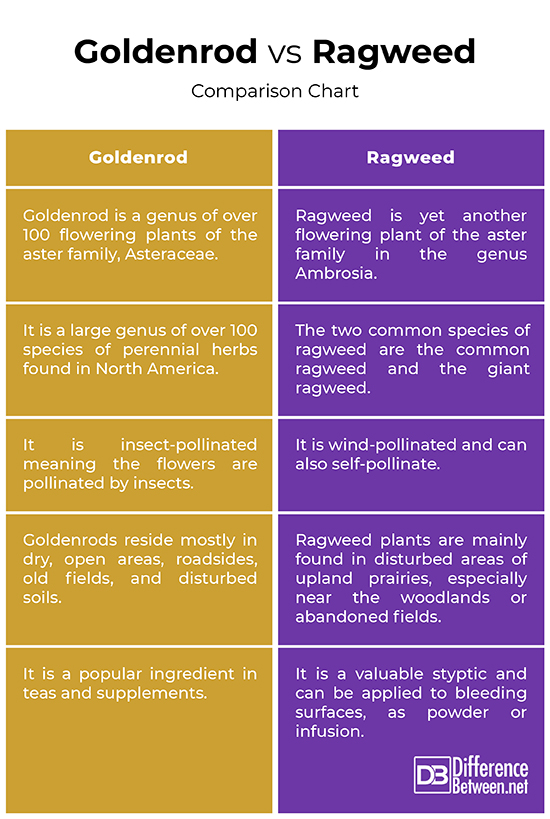Difference Between Goldenrod and Ragweed
You probably have already known goldenrod best as the yellow wildflower of the eastern United States and which is often accused of causing hay fever allergies. But there is nothing concrete to support this claim. It also goes by other names including yellow-weeds, yellow-tops, flower of gold. It is also a popular ingredient in teas and supplements. Many call it a wildflower, while others call it a weed. These are perennial herbs best known for their healing properties. And they do not cause allergies as many tend to believe. Well, it’s the ragweed, which is often confused with the goldenrod, is more likely the culprit behind causing allergies. Ragweed is often found in meadows and mostly by roadside in late summer and early fall just like goldenrod. Unlike goldenrod, ragweed disperses its seeds into the wind which eventually causes allergies and irritations. Goldenrod is mainly insect pollinated so its flowers are likely to attract insects. Let’s see why the two plants are often confused with each other.

What is Goldenrod?
Goldenrod is one of the most beautiful flowers that bloom in the late summer and is best known as the yellow wildflower of the Eastern United States. It is a perennial herb best kown for its healing properties and belongs to the daisy or composite family. This is probably one of the largest and most recently evolved group of flowering plants. It belongs to the aster family, Asteraceae. It is pollinated by insects.

What is Ragweed?
Ragweed is yet another flowering plant of the aster family in the genus Ambrosia which grows at the same time of the year as goldenrod. It is one of the primary causes of allergies in the United States. Ragweed flowers produce dry, light pollen, which is dispersed by the wind. The pollen causes the allergies we know as hay fever. Goldenrod is often blamed for the allergic reactions originally caused by ragweed plants, because they both bloom at the same time.
Difference between Goldenrod and Ragweed
Plant
– Goldenrod is the yellow wildflower of the eastern United States and a perennial herb best known for its healing properties. It is a genus of hundreds of flowering plants that belong to the aster family, Asteraceae. Goldenrods are the most showy and abundant among the many yellow flowers that predominate in summer. Ragweed is yet another flowering plant of the aster family in the genus Ambrosia which grows at the same time of the year as goldenrod. Ragweed is one of the primary causes of seasonal allergies and irritations in the United States.
Species
– Goldenrod, often called “Solidago”, is a large genus of over 100 species of perennial herbs most of which occur in North America. Over 20 species are found in the Chicago region alone. The most common are the herbaceous perennial species found mostly in meadows, savannas, and prairies. All goldenrods have alternate leaves, but the sizes and shapes of leaf vary with species. On the other hand, there are over 20 species of ragweed found in North America. The two common species of ragweed are the common ragweed and the giant ragweed. Common ragweed is the most pervasive among the species of Ambrosia.
Pollination
– One of the key differences between the two flowering plants is how they pollinate. Goldenrod is insect-pollinated meaning the flowers are pollinated by insects such as butterflies, bees, beetles, and flies. Their yellow hue alerts insects to vast stores of pollen and nectar on the prairies. Insect-pollinated flowers tend to produce a fragrance which attracts only certain insects. Ragweed, on the other hand, is wind-pollinated and can also self-pollinate. The ragweed pollen travels on the wind and remains airborne for days until it finds a new plant to fertilize the seed for the growth of a new plant.
Habitat
– Goldenrods are widespread in North America and thrives in a wide variety of habitats. The early, late and Canadian goldenrods are probably the most widely distributed of all goldenrods and reside mostly in dry, open areas, roadsides, old fields, and disturbed soils. The Curtis’s Goldenrod is found mainly in moist, forested slopes, including hardwood forests, cove forests, and oak-hickory forests. Ragweed plants, on the other hand, are mainly found in disturbed areas of upland prairies, especially near the woodlands or abandoned fields. They are also found in meadows in woodland areas or near rivers, waste sites, or by roadsides or railroads.
Uses
– Goldenrod plants is mainly used by the Native Americans for making tea and also as a medicine for urinary and kidney disorders. Goldenrods are also used as landscape plants, as well as a source of cut flowers. Goldenrod is used to treat joint pain, arthritis, gout, hemorrhoids, asthma, and so on. Ragweed leaves are stimulating and astringing, and immediately suggests medicine; it is a valuable local styptic, and can be applied to bleeding surfaces, as in piles, epistaxis, wounds, etc, as powder or infusion.
Goldenrod vs. Ragweed: Comparison Chart

Summary of Goldenrod vs. Ragweed
Goldenrod is a large genus of more than 100 species of perennial herbs that are predominant in North America and reside mostly in dry, open areas, or by roadsides, old fields, and disturbed soils. Goldenrods and Ragweeds bloom at the same time of the year and are members of the same family but the former are insect-pollinated while the latter are wind-pollinated. This means goldenrod pollen travels with the insects while ragweed pollen travels with the wind and is the true source of the allergies which is often believed to be caused by goldenrod plants.
- Difference Between Caucus and Primary - June 18, 2024
- Difference Between PPO and POS - May 30, 2024
- Difference Between RFID and NFC - May 28, 2024
Search DifferenceBetween.net :
Leave a Response
References :
[0]Image credit: https://pixabay.com/de/photos/beifu%C3%9Fbl%C3%A4ttriges-traubenkraut-wespe-3764003/
[1]Image credit: https://commons.wikimedia.org/wiki/File:Goldenrod_1r.jpg
[2]Lawlor, Elizabeth P. Discover Nature Close to Home: Things to Know and Things to Do. Mechanicsburg, Pennsylvania: Stackpole Books, 1993. Print
[3]Wood, Matthew. The Earthwise Herbal: A Complete Guide to New World Medicinal Plants. Berkeley, California: North Atlantic Books, 2009. Print
[4]Eastman, John. Wildflowers of the Eastern United States. Mechanicsburg, Pennsylvania: Stackpole Books, 2014. Print
[5]Kricher, John C. A Field Guide to Eastern Forests, North America. Boston, Massachusetts: Houghton Mifflin Harcourt, 1998. Print
[6]Spira, Timothy P. Wildflowers and Plant Communities of the Southern Appalachian Mountains and Piedmont. Chapel Hill, North Carolina: University of North Carolina Press, 2011. Print
